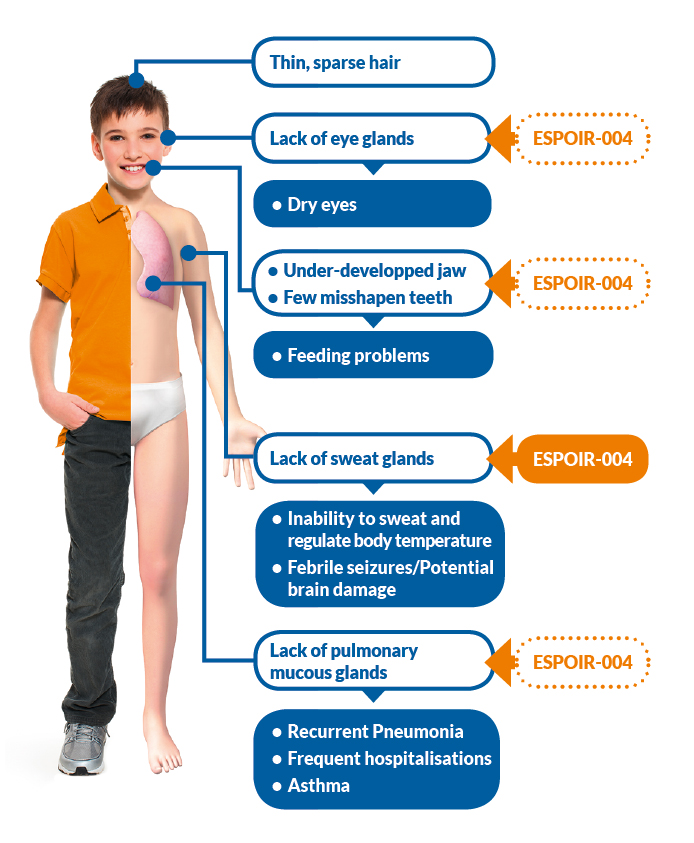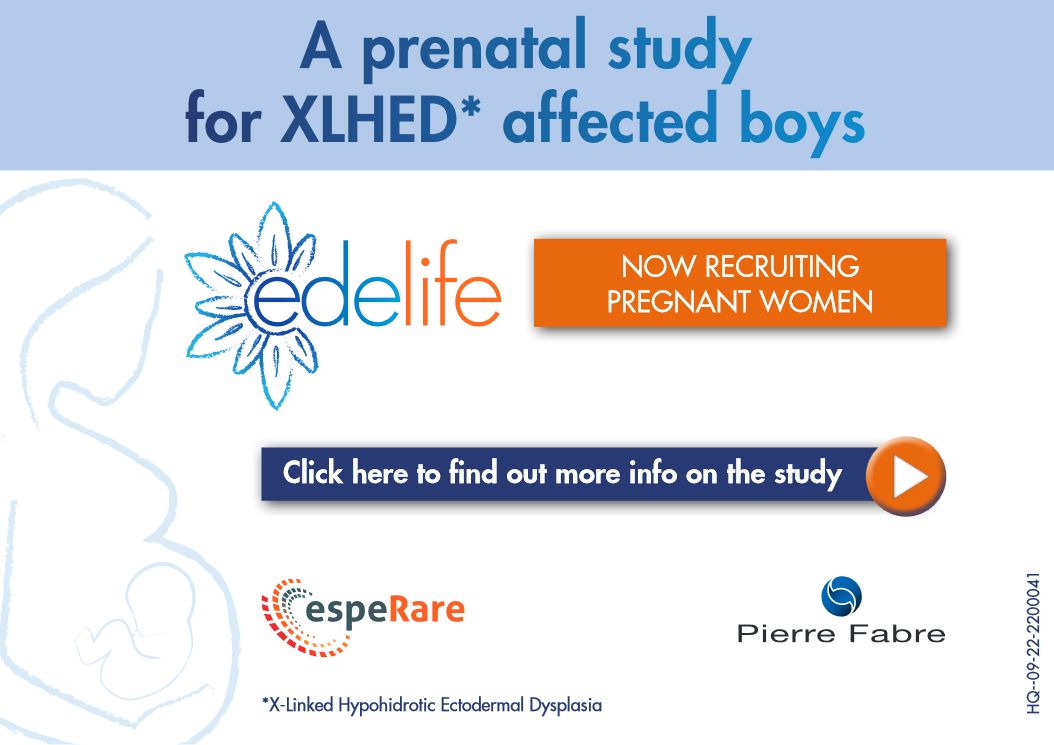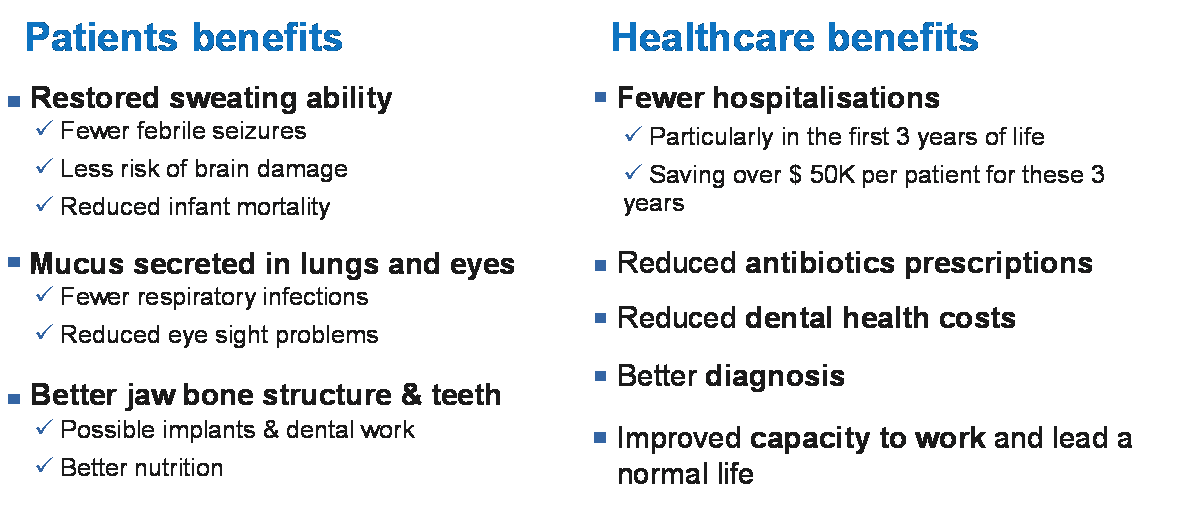X-Linked Hypohidrotic Ectodermal Dysplasia (XLHED): debilitating and potentially life-threatening disease
XLHED is debilitating and potentially life-threatening disease in the first years of life, when infants are at risk due to hyperthermia and/or severe respiratory infections. Disease morbidity, including psychosocial challenges, often persist into adulthood [2].
Some of the key symptoms of XLHED
- Diminished or absent sweat function resulting in an inability to regulate the body’s temperature. These hyperthermic episodes can lead to seizures and brain damage ;
- Impaired or absent bronchial glands leading to increased respiratory problems (mortality rate in the first years increased up to 3x) ;
- Few and often pointed teeth that cause malnutrition and lead to extensive dental work ;
- Fine, sparse hair ;
- Chronic dry, scaly skin ;
- Dry eyes.

XLHED, a disabling and potentially life-threatening disease afflicting patients throughout their lives.
XLHED Symptoms as reported by Patients

(adapted from: Fete M, Hermann J, Behrens J, Huttner KM, 2014 Am J Med Genet Part A (10):2437-42)
The incidence of XLHED is estimated to be ~4/100,000 male births. Each year, this represents ~100 male births across Europe and about ~80 in the US. Worldwide, it represents ~350 male births per year.
XLHED represents also an important medical and economic burden to the healthcare system.
Recurrent infections, hyperthermic episodes and other health issues cause frequent hospitalizations, especially in the first part of infancy and childhood. It is estimated that direct hospital costs amount to over $ 50’000 in the first 3 years of life alone [3] and dental costs amounting to up to $ 150’000 [4] throughout a patient’s lifespan can be expected. Consequences of brain damage, treatments related to hair, dentition issues as well as psychosocial challenges require important and costly medical care throughout the life of XLHED patients.



